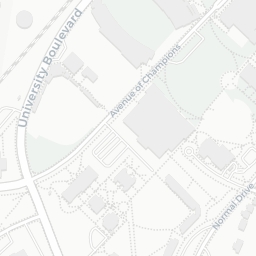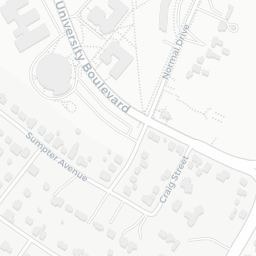Designing Higher-Level Thinking Objectives - School of Teacher Education
Designing Higher-Level Thinking Objectives
Most educators use the Revised Bloom’s Taxonomy (Anderson and Krathwohl, 2001) to determine the thinking level of objectives, assessment, and instruction. The key to creating higher-level objectives, instruction, and assessment is first understanding the Cognitive Processes that students experience when they are interacting with the content or curriculum. Do not be overly impressed with the glitz of technology in student work. When determining the level of thinking, look at how students are interacting with the content, not the technology.
There are 19 Cognitive processes associated with the 6 levels of the Revised Bloom’s Taxonomy. The six levels are as follows:
Lower-Level Thinking
1. Remember
2. Understand
3. Apply
Higher-Level Thinking
4. Analyze
5. Evaluate
6. Create
Below are the 19 Cognitive processes associated with these six levels of the Revised Bloom’s Taxonomy, a definition, and examples of each. The sample activities in the last column are associated with the authentic topic Oceans for grades 6-8.
Revised Bloom’s Levels
|
Cognitive Processes (Alternate Names) |
Definitions and Examples |
Activity or Assessment Question (All activities/assessments are directed at the students or pupils in your class.) |
1. Remember: Retrieve relevant knowledge from long-term memory
|
1.1 Recognizing (Identifying) |
Location of knowledge in long-term memory that is consistent with presented material (e.g., Recognize the dates of important events in U.S. history) |
|
|
1.2 Recalling (Retrieving) |
Retrieving relevant knowledge from long-term memory (e.g., Recall the dates of important events in U.S. history) |
|
2. Understand: Construct meaning from instructional messages, including oral, written, and graphic communication
|
2.1 Interpreting (Clarifying, Paraphrasing, Representing, Translating) |
Changing from one form of representation (e.g., numerical) to another (e.g., verbal) (e.g., Paraphrase important speeches and documents) |
|
|
2.2 Exemplifying (Illustrating, Instantiating) |
Finding a specific example or illustration of a concept or principle (e.g., Give examples of various artistic painting styles) |
|
|
2.3 Classifying (Categorizing, Subsuming) |
Determining that something belongs to a category (e.g., Classify observed or described cases of mental disorders) |
|
|
2.4 Summarizing (Abstracting, Generalizing) |
Abstracting a general theme or major point(s) (e.g., Write a short summary of events portrayed on a videotape) |
|
|
2.5 Inferring (Concluding, Extrapolation, Interpolating, Predicting) |
Drawing a logical conclusion from presented information (e.g., In learning a foreign language, infer grammatical principles from examples) |
|
|
2.6 Comparing (Contrasting, Mapping, Matching) |
Detecting correspondences between two ideas, objects, and the like (e.g., Compare and contrast historical events to contemporary situations) |
|
|
2.7 Explaining (Construction) |
Construction a cause-and-effect model of a system (e.g., Determine how change, compromise, and culture affected the journey of your chosen explorer; Explain the causes of important 18th-century events in France) |
|
3. Apply: Carry out or use a procedure in a given situation
|
3.1 Executing (Carrying out) |
Apply a procedure to a familiar task (e.g., When serving as the cashier in the classroom store, count back change to the customers when they pay you; When studying about alcohol abuse, determine the difference in a man’s or woman’s blood alcohol levels at three different weights and three different amounts of alcohol consumed in one hour; Divide one whole number by another whole number, both with multiple digits) |
|
|
3.2 Implementing (Using) |
Applying a procedure to an unfamiliar task (e.g., Use persuasion techniques to create a multimedia presentation to convince your principal to implement your recycling plan; Use Newton’s Second Law in situations in which it is appropriate) |
|
4. Analyze: Break material into its constituent parts and determine how the parts relate to one another and to an overall structure or purpose
Remember: If a student can “google” a question or prompt to find the answer OR if it only takes a few minutes to answer a prompt, it is not higher-level thinking at the Analyze, Evaluate, or Create level.
|
4.1 Differentiation (Discriminating, Distinguishing, Focusing, Selecting)
|
Distinguishing relevant from irrelevant parts or important parts of presented material; Differentiating is different from the cognitive processes associated with Understand because it involves structural organization and, in particular, determining how the parts fit into the overall structure or whole. (e.g., Research at least ten different methods of protecting crops from insect pests. Distinguish which are chemical or not and select the two best methods to use in organic farming in Kentucky. Justify your answer.) |
|
|
4.2 Organizing (Finding coherence, Integrating, Outlining, Parsing, Structuring) |
Determine how elements fit or function within a structure; Builds systematic and coherent connections among pieces of relevant information; Occurs in conjunction with Differentiating since the student first identifies the relevant or important elements and then determines or imposes an overall structure, configuration, or arrangement on the content. (e.g., After studying about how to farm tilapia fish and how to grow plants in water, determine how the elements of these two systems can fit or function within one system to mutually benefit both the fish and the plants; Structure evidence from the recent presidential election into evidence to determine which political party will probably win the next presidential election in four years) |
|
|
4.3 Attributing (Deconstructing) |
Determine a point of view, a bias, values, or intent underlying presented material (e.g., Determine the point of view of the author of an essay in terms of his or her political perspective.) |
|
5. Evaluate: Make judgments based on criteria and standards
|
5.1 Checking (Coordinating, Detecting, Monitoring, Testing) |
Detecting inconsistencies or fallacies within a process or product; determining whether a process or product has external consistency; determining the effectiveness of a procedure as it is being implemented (e.g., Determine if a scientist’s conclusions follow from the raw data; Evaluate another group’s business plan to determine whether the productive resources (natural, human, and capital) were used in the most effective manner and whether their product reflects consumer demands.) |
|
|
5.2 Critiquing (Judging) |
Determining inconsistencies between a product and external criteria; determining whether a product has external consistency (e.g., Judge which of two methods is the best way to solve a problem given a set of external criteria; Create a blog to present the inconsistencies of the debate on whether or not organic food is better for people and the environment. Use the USDA’s criteria for organic food classification as a basis for your response. Give your personal conclusion and justification.) |
|
6. Create: Put elements together to form a coherent or functional whole; reorganize elements into a new pattern or structure
|
6.1 Generating (Hypothesizing) |
Coming up with alternative hypotheses based on criteria (e.g., Generate as many hypotheses as you can to explain why some businesses might not have been a success in our town; Generate hypotheses to account for an observed phenomenon) |
Some proponents of the UN Law of the Sea believe that the treaty will establish a system of property rights for mineral extraction in deep sea beds, making the investment in such ventures more attractive. Hypothesize how this type of drilling and mineral extraction will affect the economy, energy sources, and the animal life in the immediate location. |
|
6.2 Planning (Designing) |
Devising a detailed procedure for accomplishing some task (e.g., Submit a business plan for your proposed business including cover sheet, table of contents, executive summary, business context, business profile, marketing analysis, challenges and responses, marketing plan, financials, time table, summary of needed capital.) |
|
|
6.3 Producing (Constructing) |
Inventing a product (e.g., Build a habitat for an original animal you created.) |
|
Anderson, L. W., Krathwohl, D. R., et al (Eds..) (2001). A taxonomy for learning, teaching, and assessing: A revision of bloom's taxonomy of educational objectives. Boston, MA: Allyn & Bacon.
The School of Teacher Education
Gary A. Ransdell Hall, Office 1005
1906 College Heights Blvd. #11030,
Bowling Green, KY 42101-1030
Additional Information
Program Info




















